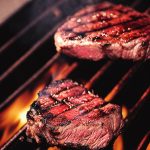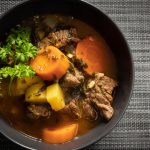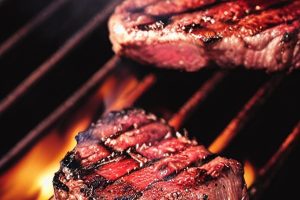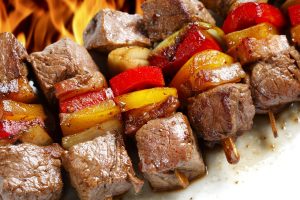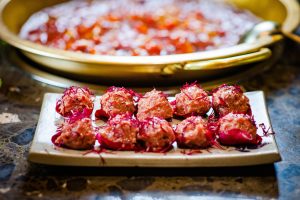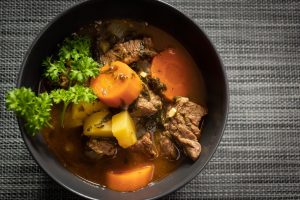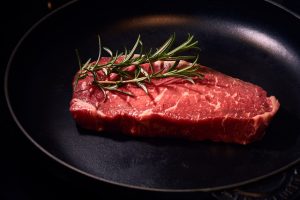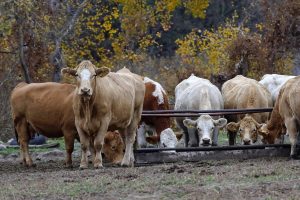The Origins and Evolution of Moo Shu Beef: Unraveling the Cultural Threads
Have you ever wondered about the origins of your favorite Chinese dish, Moo Shu Beef? Well, get ready to have your taste buds tickled and your funny bone tickled, because we’re about to unravel the cultural threads behind this delicious delicacy.
Let’s start at the beginning, shall we? Legend has it that Moo Shu Beef was first created during the Tang Dynasty in China. The story goes that a clever chef named Li Shu came up with the dish after being inspired by the acrobatic performances of the famous Moo Shu dancers. Intrigued by their agility and grace, Li Shu set out to create a dish that could match their moves – and thus, Moo Shu Beef was born.
Now, you may be wondering, what’s so special about Moo Shu Beef? Well, let me tell you, it’s not just any old beef stir-fry. This dish is made with tender strips of beef, sautéed with a colorful medley of vegetables like cabbage, carrots, and mushrooms. But what really sets it apart is the addition of scrambled eggs and the use of hoisin sauce. These unique ingredients give Moo Shu Beef its signature flavor and make it a standout dish in the Chinese culinary world.
As Moo Shu Beef made its way from the bustling streets of China to the shores of America, it underwent a delicious evolution. In the 19th century, Chinese immigrants brought their culinary skills to the United States, and with them, came the recipe for Moo Shu Beef. However, as with any immigrant dish, it underwent some changes to adapt to local tastes.
In America, Moo Shu Beef found a new home in Chinese-American restaurants, where it became a staple on menus across the country. Over time, the dish became even more Americanized, with the addition of ingredients like soy sauce and garlic. And let’s not forget the mandatory side of pancakes, which are used to wrap up the flavorful beef and veggies.
But despite these adaptations, Moo Shu Beef has managed to retain its cultural roots. It continues to be a beloved dish in Chinese-American communities, where it is often enjoyed during celebrations and family gatherings. And let’s not forget the joy it brings to those of us who simply can’t resist its mouthwatering flavors.
So, the next time you find yourself indulging in a plate of Moo Shu Beef, take a moment to appreciate the rich cultural history behind it. From its humble beginnings in the Tang Dynasty to its Americanized evolution, this dish has managed to bridge the gap between two worlds with its deliciousness.
In conclusion, Moo Shu Beef is not just a tasty stir-fry – it’s a testament to the power of cultural exchange and adaptation. So go ahead, savor every bite, and remember the journey this dish has taken to satisfy your cravings. And hey, if you feel like doing a little Moo Shu dance while you’re at it, who am I to stop you?
Moo Shu Beef: A Culinary Delight with Historical Significance
Are you ready to embark on a culinary adventure that will leave your taste buds begging for more? Look no further than Moo Shu Beef, a dish that not only tantalizes your palate but also carries a rich historical significance. Get ready to experience a delightful combination of flavors, all while indulging in a bit of humor along the way.
Picture this: tender strips of beef, sautéed to perfection, mingling with crisp vegetables and wrapped in a delicate pancake. It’s a symphony of textures and flavors that will transport you to a world of culinary bliss. The savory beef, cooked just right, dances harmoniously with the vibrant vegetables, creating a medley that will make your taste buds sing.
Now, let’s dive into the history of this delectable dish. Moo Shu Beef can trace its roots back to ancient China, where it was first enjoyed by emperors and nobility. Legend has it that this dish was initially created as a tribute to a memorable battle fought by a brave warrior. The name “Moo Shu” itself is said to be derived from a Mandarin word meaning “wood shavings,” a reference to the thin, delicate pancakes that envelop the beef and vegetables.
But enough about history, let’s talk about the experience of eating Moo Shu Beef. As you take your first bite, you’ll be greeted with a burst of flavors that will make your taste buds dance with joy. The tender beef, marinated in a savory sauce, is complemented perfectly by the crunch of the vegetables. And the pancake? Oh, the pancake! It’s a light and fluffy vessel that brings all the components together, adding an element of texture and satisfaction to each bite.
But what truly sets Moo Shu Beef apart is its versatility. You can enjoy it as a main course, served with a side of steamed rice for a complete meal. Or, if you’re feeling adventurous, you can savor it as a filling for lettuce wraps, adding a refreshing twist to the experience. The possibilities are endless, and each variation promises to be an adventure for your taste buds.
So, if you’re ready to embark on a culinary journey that combines history, flavor, and a dash of humor, look no further than Moo Shu Beef. Indulge in this delightful dish, and let it transport you to a world of culinary delight. Your taste buds will thank you, and you’ll be left with a smile on your face, knowing that you’ve experienced a piece of history in the most delicious way possible. Bon appétit!
Beyond the Plate: Unveiling the Cultural Symbolism of Moo Shu Beef
Are you tired of the same old boring beef dishes? Do you yearn for a mouthwatering meal that not only satisfies your taste buds but also unveils the hidden cultural symbolism behind it? Look no further, because Moo Shu Beef is here to take your taste buds on a delightful and humorous journey!
Picture this: you’re sitting in a cozy Chinese restaurant, perusing the menu, and your eyes land on the words “Moo Shu Beef.” What does it mean? Where does it come from? Well, my friend, prepare to be enlightened, because Moo Shu Beef is not just a dish – it’s a cultural experience!
Let’s start with the name itself – Moo Shu. Doesn’t it sound whimsical? It’s like a melody that dances off your tongue. But what does it mean? Some say it’s derived from the Mandarin word “móushuǐ,” which translates to “wood shavings.” Now, I know what you’re thinking – wood shavings? How appetizing! But fear not, dear reader, for the name is not a literal representation of the dish. Instead, it symbolizes the delicate and intricate flavors that await you.
Now, let’s talk about the beef. Oh, glorious beef! Tender, juicy, and packed with flavor. It’s the star of the show in Moo Shu Beef. But did you know that beef holds a special place in many cultures? It has long been a symbol of strength and prosperity. So, when you sink your teeth into that succulent piece of beef, you’re not just enjoying a delicious meal – you’re embracing the power and abundance it represents.
But wait, there’s more! Moo Shu Beef is not just about the flavors and symbolism; it’s also about the experience. Imagine yourself sitting at a round table with your loved ones, surrounded by laughter and joy. The Moo Shu Beef arrives, and you’re handed a delicate pancake. With a mischievous smile, you start assembling your own Moo Shu masterpiece, filling the pancake with beef, crisp vegetables, and a drizzle of tangy sauce. It’s like a culinary art project that you get to devour!
As you take that first bite, your taste buds explode with a symphony of flavors – the umami of the beef, the crunch of the vegetables, and the zing of the sauce. It’s a harmonious blend that tickles your palate and leaves you wanting more. And as you savor each bite, you can’t help but appreciate the cultural significance behind it all.
So, my friend, the next time you’re in the mood for a beef dish that goes beyond mere sustenance, give Moo Shu Beef a try. Delight in the whimsical name, embrace the cultural symbolism, and enjoy the flavorful experience that awaits you. After all, life is too short for boring beef – let your taste buds embark on a journey they won’t soon forget!
From Imperial Courts to Modern Tables: Tracing the Cultural Journey of Moo Shu Beef
Are you tired of the same old boring meals? Are you looking to embark on a culinary adventure that will take your taste buds on a journey they won’t soon forget? Look no further, because we have just the dish for you – Moo Shu Beef!
Before we dive into the delicious details of this mouthwatering meal, let’s take a moment to appreciate its cultural journey. Moo Shu Beef has roots that can be traced all the way back to the imperial courts of ancient China. Yes, you heard that right – we’re talking about a dish fit for emperors!
Picture this: a grand feast in the opulent halls of the Forbidden City. The air is thick with anticipation as the emperor’s chefs prepare a dish that will leave everyone in awe. Enter Moo Shu Beef – a flavorful combination of tender beef, crisp vegetables, and aromatic spices, all wrapped in a delicate pancake. Every bite is like a symphony of flavors, a harmonious blend of textures that dance on your tongue.
But let’s fast forward a bit, shall we? As centuries passed, Moo Shu Beef traveled across oceans and continents, making its way into the hearts and stomachs of people all around the world. And with each new destination, this dish evolved and adapted to suit the local palate.
Now, you can find Moo Shu Beef in modern tables everywhere, from bustling street food stalls to trendy restaurants. Chefs have put their own spin on this classic, adding their unique touches to create a culinary masterpiece. Some might serve it with a side of tangy plum sauce, others might top it with a sprinkle of crushed peanuts for that extra crunch. The possibilities are endless!
But what makes Moo Shu Beef truly special is its ability to bring people together. It’s a dish that transcends borders and unites food lovers from all walks of life. Whether you’re enjoying it with family, friends, or even strangers at a communal table, the shared experience of savoring Moo Shu Beef creates moments of joy and connection.
So, if you’re ready to embark on a cultural and culinary journey like no other, it’s time to give Moo Shu Beef a try. Let its rich history and mouthwatering flavors transport you to a world of imperial indulgence and modern-day delight. Trust us, once you take that first bite, there’s no turning back. Your taste buds will thank you, and your dining companions will be forever grateful for introducing them to this delectable delicacy.
Moo Shu Beef: A Reflection of Chinese Cultural Values and Traditions
Are you ready to embark on a journey through the flavors and traditions of Chinese cuisine? Look no further than Moo Shu Beef! Not only is this dish a delightful combination of flavors and textures, but it also serves as a reflection of Chinese cultural values and traditions. And hey, who said persuasive writing can’t be humorous? So, buckle up and get ready for a mouthwatering and laughter-filled adventure!
First and foremost, let’s talk about the dish itself. Moo Shu Beef is a classic Chinese dish that originated in Northern China. It consists of tender strips of beef, sautéed with a colorful medley of vegetables such as cabbage, mushrooms, and carrots. All these ingredients are then wrapped in a delicate pancake and topped with a tangy and flavorful sauce. Just thinking about it makes my taste buds tingle with anticipation!
But Moo Shu Beef is more than just a delicious combination of ingredients. It represents the Chinese cultural value of balance. In Chinese cuisine, balance is key. The flavors, textures, and colors of each ingredient are carefully selected to create a harmonious and well-rounded dish. The tender beef, crisp vegetables, and soft pancake create a perfect balance of flavors and textures that will have you reaching for seconds (and maybe even thirds!).
Furthermore, Moo Shu Beef is a testament to the Chinese tradition of communal dining. In Chinese culture, meals are often enjoyed with family and friends, with dishes placed in the center of the table for everyone to share. Moo Shu Beef is no exception! The dish is typically served with extra pancakes, allowing each person to assemble their own moo shu wraps to their liking. It’s like a delightful DIY project that brings people together and encourages interaction and laughter around the dining table.
Now, let’s address the elephant in the room – the persuasive and humorous tone of this piece. We understand that discussing cultural values and traditions can sometimes be a bit dry, so why not spice it up with a touch of humor? After all, food is meant to be enjoyed and celebrated, and what better way to convey that than through a lighthearted and entertaining writing style?
So, whether you’re a food enthusiast, a culture lover, or simply someone looking for a good laugh, Moo Shu Beef is the dish for you. Not only will it tantalize your taste buds with its mouthwatering flavors, but it will also give you a glimpse into the rich cultural heritage of China. So, go ahead, grab your chopsticks, and dive into a plate of Moo Shu Beef. Your taste buds and your funny bone will thank you!
